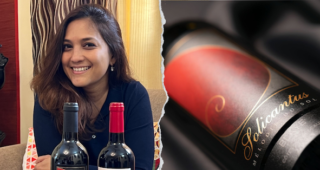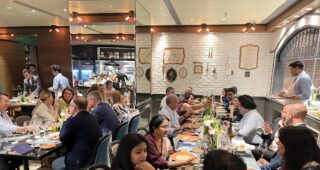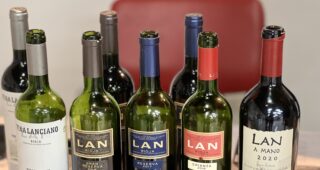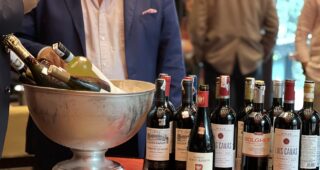Having six Champagne glasses in front of you with corresponding bottles to be poured in distant vision is a proposition most of us would call fit for a dream. Add a tasting sheet in the foreground and the context changes from pure indulgence to a surrounding rim of onerous responsibility – a responsibility to objectively and platonically dwell into the virtues of Champagne- a fine beverage, subordinate only to the life sustaining aqua.


As Thibaut Le Mailloux, Director of Communication at Comité Interprofessionnel du Vin de Champagne (CIVC) gave finishing touches to his Champagne Masterclass presentation and the perfectionist Rajiv Singhal, Ambassador of Champagne in India deftly stroked the final touches at JW Marriott, Aerocity, New Delhi this November, I greeted them with “Bonjour- Vous allez bien?” and saw Thibaut’s face light up with instant recognition. I had met Thibaut in Epernay, in 2012 during my scholarship trip to CIVC in Rajiv’s company and it looked that the bond had just rekindled.

The Champagne Masterclass, which is held regularly across the globe by CIVC aims at reinforcing the simple fact- that Champagne comes only from Champagne, with the historical perspective thrown in to emphasize the beverage’s centuries old tradition through the crests and troughs of time. But besides the veritable history, it dives deep into various styles of Champagnes, peculiarities of different regions within the arrondissement (department) and different styles of Champagne – to name a few.
Beverages managers from different star properties (for whom the masterclass was meant) had their skills polished by Thibaut in this rendezvous, and their exuberance was quite palpable by the type of questions coming in- from dosage issues to simple but relevant ones like which Champagne out of the six for the day was Thibaut’s favourite? The seasoned professional but naturally, handled all the volleys with élan.
Coming to the Champagnes, these depicted the amount of brain racking that must have gone into their selection to emphasize each style. The table below amplifies the sequence:

The beauty of the session was that it did not solely depend on sampling wines but to create the right perspective before the first verre was lifted. For hospitality industry it becomes absolutely essential to understand the evolution of iconic beverages like Champagne, to be able to present them better to their valuable clients for driving home the value derived. To that effect I think that the session achieved that and much more within a third of a day’s proceedings.
Some random ‘Pearls of Wisdom’ gathered from the session were :
- The Champagne viticultural practices are highly environment focused with advanced R&D being incorporated at all stages of production. One such measure is ‘Sexual Confusion’ wherein plastic capsules containing phermones are located strategically within vineyards. These phermones emit same sex perfume for pests, deterring them from reproducing and hence pesticides are not required for their control.
- The Champagne Appellation has faced brand infringement issues not only for sparkling wine producers but also global luxury brands making perfumes, shampoos, cigarettes et al. It has successfully contested many such cases in the courts. 14 Champagne Bureaus located in top 10 export markets as well as BRIC countries act as Champagne’s vanguards. In India the bureau is headed by Rajiv Singhal.
- No Champagne bottle across the world is available without a proper label indicating its provenance. If one is lured by a purported Champagne without label at a bargain price- it would most certainly be a fake.
- 83% of Champagne sales are consumed within 10000 km radius of the region. This is due to ease of geographical access as well as taxation issues.
- Out of the 11 mn € of wine and spirits exports of France, two thirds is wine and out of this, two thirds is Champagne. Many Champagne houses have interesting stories to their names. For example, Drappier Champagne comes from a family enterprise, which started its business with bed linen several centuries back and switched over to Champagne production when it started becoming popular in early nineteenth century. In French language Drapsmeans Bed sheets and hence the name.










